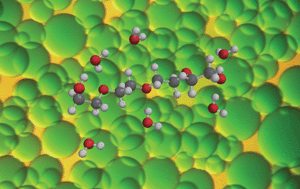Polyethylene glycol and solutions of polyethylene glycol as green reaction media
Abstract
In this review, we examine the concept that aqueous biphasic reactive extraction (ABRE) can successfully integrate the solvent properties of polyethylene glycol (PEG) and its phase-transfer characteristics into a single efficient system which can additionally be manipulated to facilitate the separation of reactants and/or catalysts from products. We also suggest that the properties of these systems may recommend them as being relatively environmentally benign in comparison to the current use of organic solvents in extraction and in reactive extraction. In developing this concept, we review a number of the physical and chemical properties of PEG and aqueous solutions of PEG in the context of recent applications to chemical reaction engineering. Thus, we cover the interesting physical properties of PEG solutions in water, their unique solvent properties, and finally the metal cation coordination ability of PEG solutions. These properties are important in the application of low molecular weight liquid PEG as a solvent in chemical reactions; in the use of PEG as an alternative phase-transfer catalyst (PTC); and in the application of ABRE in the development of alternative pulping processes, catalytic chemistry, and enzymatic catalysis.


 Please wait while we load your content...
Please wait while we load your content...